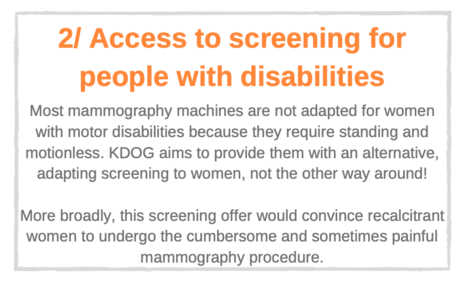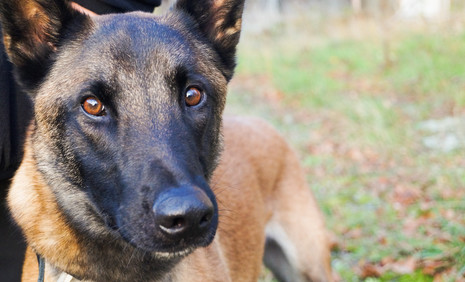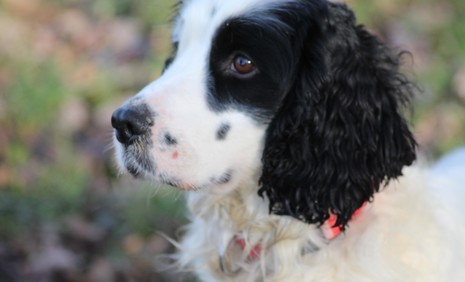KDOG'S STORY

The genesis of the project
'I believe very strongly in the human being and this feeling guides my actions.'
Isabelle Fromantin
2009
Isabelle is starting a thesis focusing on bacterial biofilms of breast tumor wounds. In the course of her research, she came to study the Volatile Organic Compounds (VOCs) emitted by bacteria and then became interested in the odours diffused by these wounds.
2012
At the end of her thesis, Isabelle hypothesizes that V.O.C., and associated odors, could be a biomarker of breast cancer. Undetectable for the human nose, two methods would allow the identification of these characteristic odors: analytical chemistry and detection by canine odorology.
2013
The meeting with dog experts gives the KDOG project its initial impetus. A call was then made to many hospitals to collaborate in the experimentation of the detection of breast cancer transcutaneous by canine olfaction, and a multidisciplinary team was quickly formed.
Objectives of the project




The preliminary study
2016
Thanks to participatory financing, KDOG acquires its first two dogs, Thor and Nykios, who begin training at the Magnac-Laval dog center. The first sweat samples are then taken: 140 women, sick or healthy, volunteer to receive the KDOG kit, wear the wipes overnight and send them back to the dog center.
2017
For 6 months, the dogs exercise their olfactory memory on a line of 4 cones, i.e. 4 samples. Each line is composed of one positive and three negatives. The results were more than encouraging: evaluated on samples that were unknown to them, the dogs had a success rate of 90.3% in the first round! This proof of concept was presented at the Academy of Medicine on February 21, 2017 by Isabelle Fromantin and Séverine Alran.
• • •
A success rate of more than 90%!
• • •
Our first dogs
Malinois have a great capacity for learning and concentration, great stamina, a taste for games, and make excellent collaborators. It is therefore with two Malinois, Thor and Nykios, first trained at the Magnac-Laval canine center, then at the Champvoisy center starting in the summer of 2017, that KDOG has chosen to begin its research.
THOR

Thor is the first dog in the KDOG project. This playful and affectionate Malinois began training in April 2016, at the age of 17 months. In February 2017, his cancer wipe detection rates reached 100%!
However, over time, his motivation was eroding, and it was clear that Thor preferred human contact to detector dog work. He was then adopted by the family of an animal osteopath, who fell in love with him during a training course at the Champvoisy site.
NYKIOS

Highly efficient, playful and precise, Nykios is the second Malinois to join the team, at the age of 18 months.
In January 2017, he was awarded the Hero Dog Trophy in the "Disease Detecting Dog" category, presented by the Société Centrale Canine at Paris City Hall. He was taken on stage by the canine expert Didier Valentin and Doctor Anne Vincent-Salomon and received the medal from the hands of Natacha Harry.
Unfortunately, Nykios left us in the spring of 2020, carried away by illness.
Malinois is not the only breed that can perform well in disease detection. The KDOG team therefore decided, in September 2017, to train a third dog: Milou, a springer spaniel.
MILOU

Born on the site of Champvoisy, Milou began his training at the age of one and a half, following the same method as Thor and Nykios. At once playful, calm, tender and obedient, he is an exceptional detector dog who quickly proves his efficiency.
However, during his training, Milou has also learned to read humans and to adapt his analysis to their reactions. His work, therefore biased, can no longer be suitable for the clinical study that will be set up.
